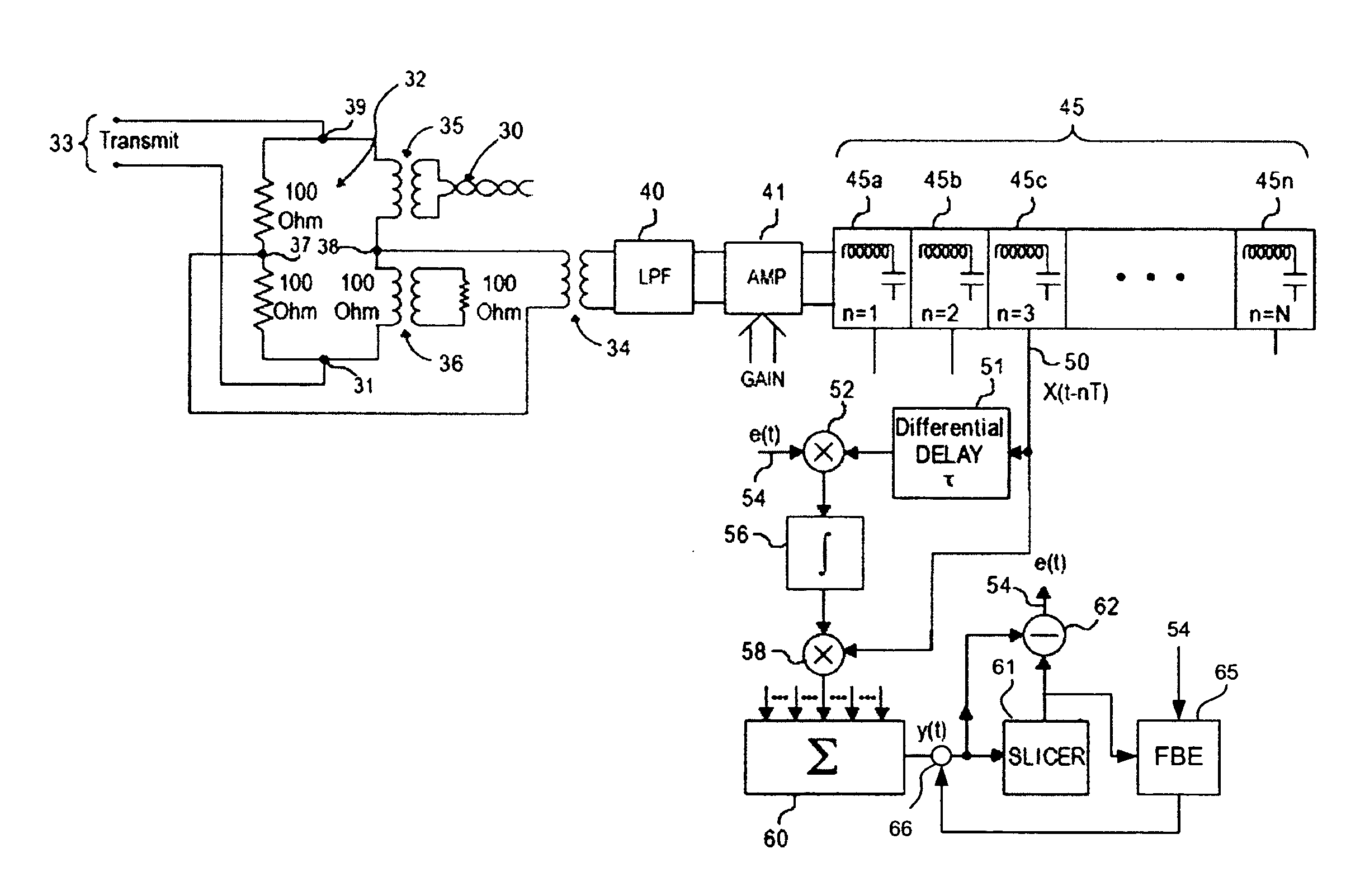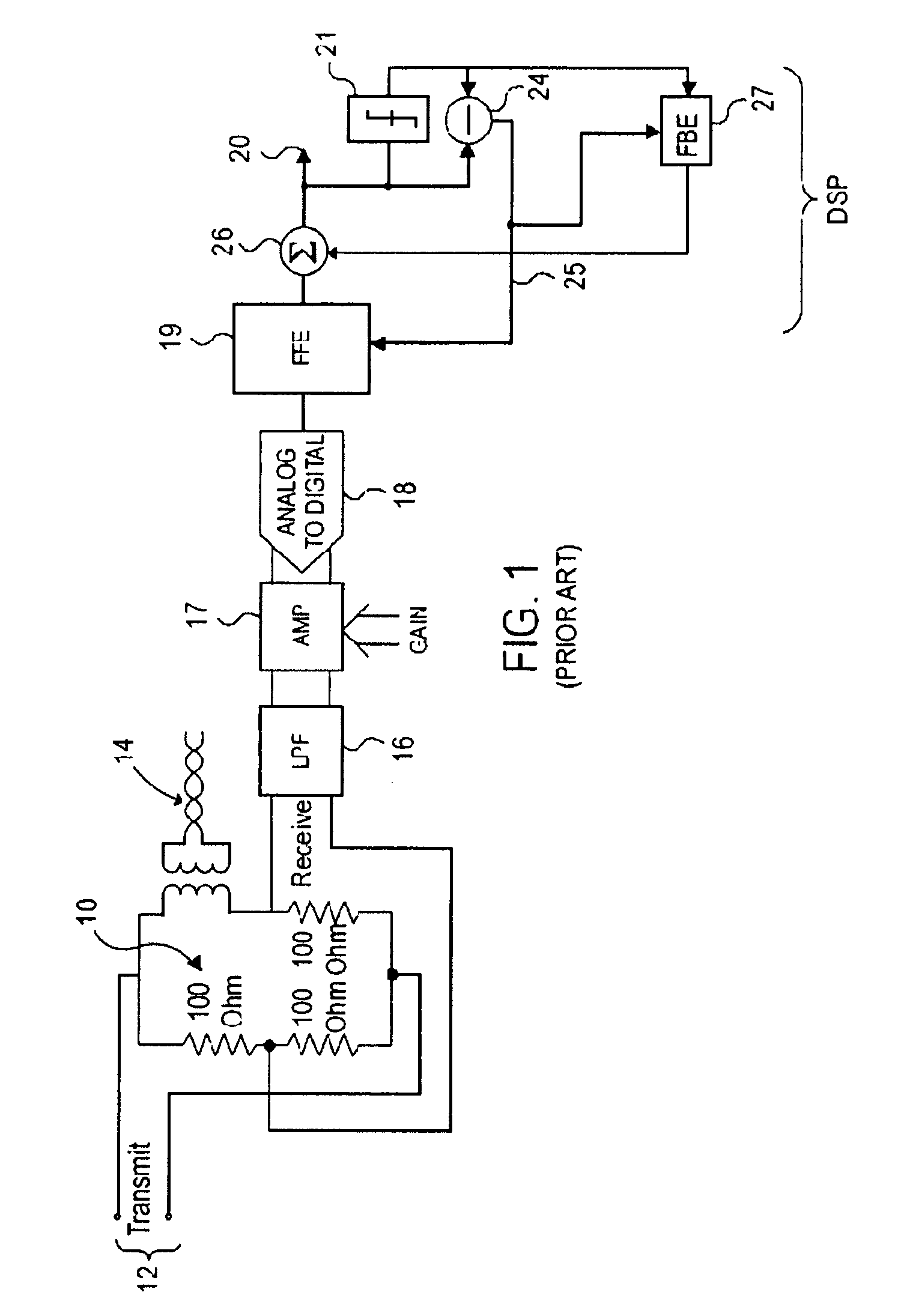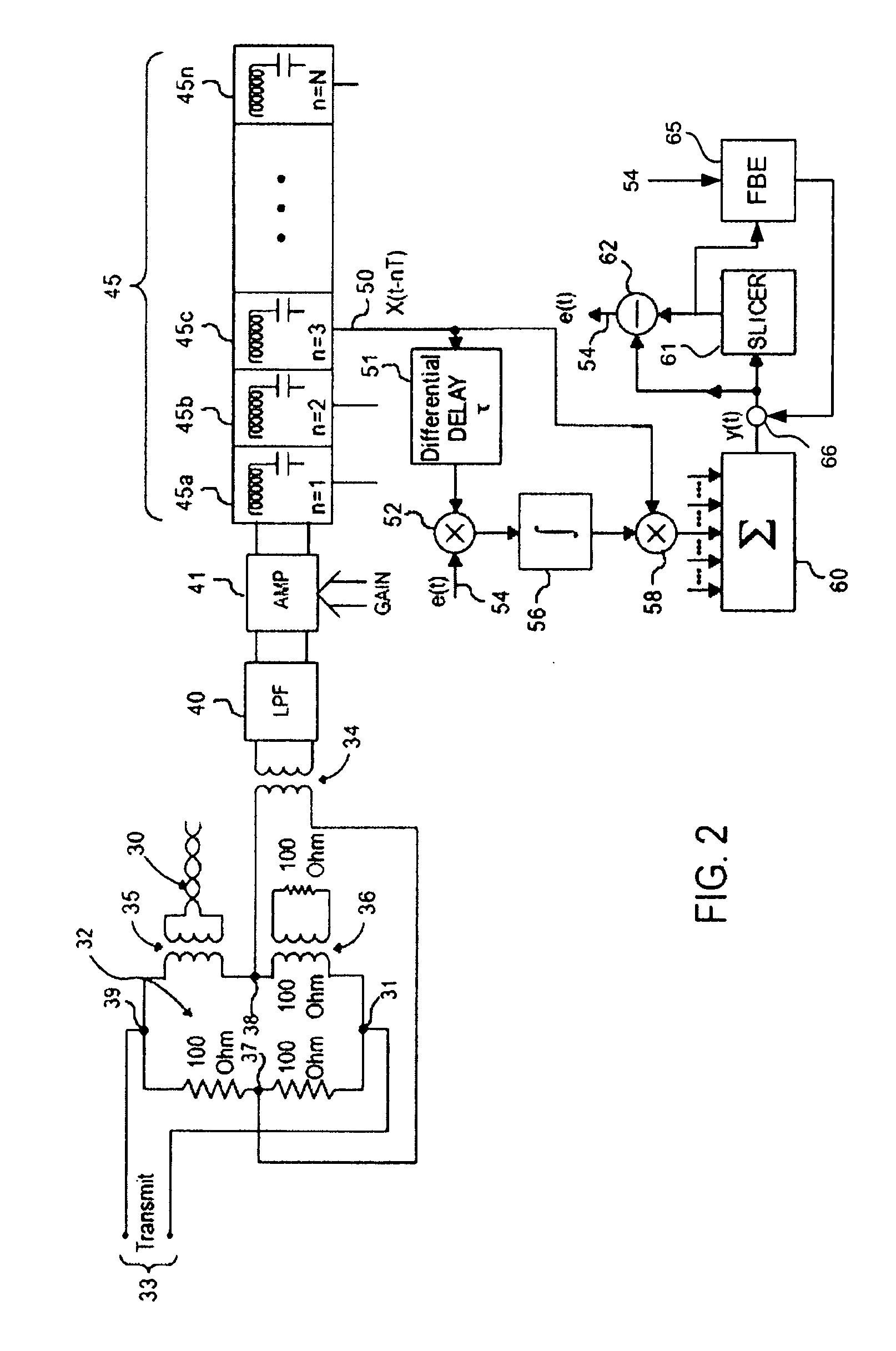Joint phased training of equalizer and echo canceller
a phased training and equalizer technology, applied in the field of analog signal processing, can solve the problems of inability to store or set tap weight indefinitely, design of a/d converters may be considered limiting factors, quantization noise further deterioration,
- Summary
- Abstract
- Description
- Claims
- Application Information
AI Technical Summary
Problems solved by technology
Method used
Image
Examples
Embodiment Construction
[0036]A method and apparatus are described for joint training of an adaptive equalizer (AEQ) and an adaptive echo canceller (AEC), which both process an input analog signal X(t) in the analog domain. In one embodiment, the method includes joint training the AEQ and the AEC using independent analog error signals. The analog error signals are input into independent LMS machines for training the AEQ and AEC simultaneously. Joint training of the AEQ and AEC does not require complex timing or complex start-up process. Because the AEQ and AEC use independent analog error signals, the performance of the AEQ is independent of the performance of the AEC, and vice versa. In addition, joint training provides a way to independently reset the tap weights for the AEQ (e.g., all taps but one tap are set to zero) and AEC (e.g., all taps set to zero). Furthermore, joint training yields stable loops in the analog processing circuitry.
[0037]A circuit for joint training of an adaptive equalizer and ada...
PUM
 Login to View More
Login to View More Abstract
Description
Claims
Application Information
 Login to View More
Login to View More - R&D
- Intellectual Property
- Life Sciences
- Materials
- Tech Scout
- Unparalleled Data Quality
- Higher Quality Content
- 60% Fewer Hallucinations
Browse by: Latest US Patents, China's latest patents, Technical Efficacy Thesaurus, Application Domain, Technology Topic, Popular Technical Reports.
© 2025 PatSnap. All rights reserved.Legal|Privacy policy|Modern Slavery Act Transparency Statement|Sitemap|About US| Contact US: help@patsnap.com



